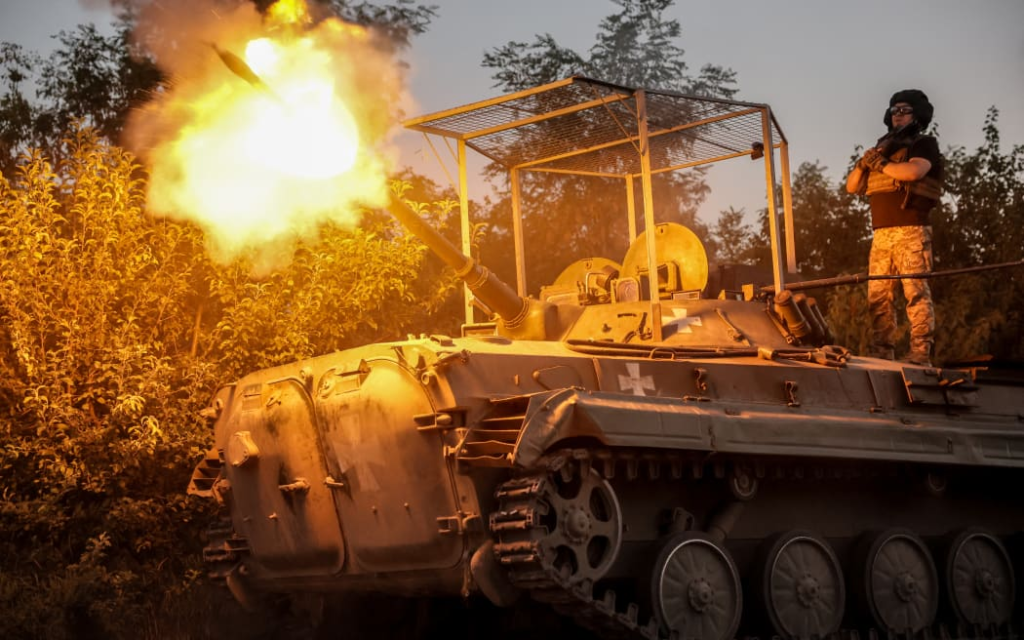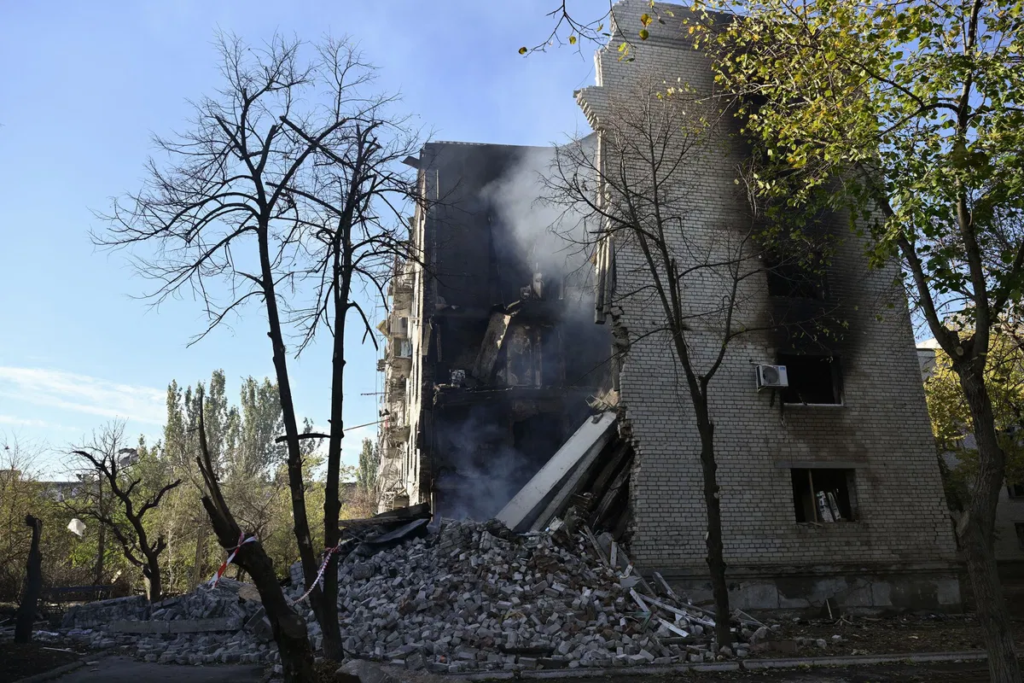Ukraine has been fighting a relentless war against Russia since February 2022, and the latest developments mark one of the most challenging phases of this conflict. As Ukraine’s Commander-in-Chief Oleksandr Syrskyi recently warned, his forces are now confronting one of the most powerful Russian offensives since the war began.
The situation on the eastern front, particularly in the Donbas region, has become increasingly dire as Russia continues to make significant gains. This intensifying offensive could shape the future of the war, potentially determining the fate of key territories and the morale of Ukrainian forces.
The eastern Donbas region has long been a focal point of Russia’s territorial ambitions. Russian President Vladimir Putin has made it clear that capturing this region is a critical objective for his government. Recent reports from open-source intelligence and satellite data suggest that Russia’s military has been advancing at its fastest pace in over a year.
Moscow has claimed the capture of key settlements such as Kurakhivka and Vyshneve, though Ukrainian officials have yet to confirm these claims. These towns are located in a strategically important area near Pokrovsk, a logistics hub that Russia hopes to seize as part of its broader plan to secure eastern Ukraine.
The Situation on the Eastern Frontline
The conflict in eastern Ukraine has always been intense, but the current situation has escalated to unprecedented levels. According to Syrskyi, Russian forces are mounting attacks that require Ukrainian units to constantly replenish their resources.
The pressure on Ukrainian troops is immense, and the ongoing assault threatens to stretch their defenses to the breaking point. Despite the challenges, Syrskyi remains confident in Ukraine’s ability to hold the line, emphasizing that Ukrainian forces continue to resist one of the most formidable offensives launched by Russia since the beginning of the full-scale invasion.
However, it is clear that the scale and intensity of the Russian attacks are testing the resilience of Ukraine’s defenders. Moscow has concentrated significant military resources in the region, including artillery, armored vehicles, and air support.
The latest offensives have also seen Russia employing a mix of drones, missiles, and Shahed drones, many of which target civilian infrastructure and military positions.
Read : US Announces Another $425 Million Aid to Ukraine Amid North Korean Troops in Russia
Over the past week alone, Russia has launched over 50 drone attacks and dropped more than 900 bombs on Ukrainian soil, according to Ukrainian President Volodymyr Zelensky. The strikes have caused widespread devastation, hitting critical energy infrastructure and civilian areas across the country.
Russian Gains in the Donbas
Russia’s military strategy in eastern Ukraine has focused on incremental territorial gains, with a particular emphasis on capturing strategically valuable areas. In recent weeks, Moscow has claimed the capture of Kurakhivka and Vyshneve, two settlements in the Donetsk region.
While these claims have yet to be verified by Ukrainian authorities, the potential loss of these towns is a significant development for the ongoing battle in Donbas.
Vyshneve is particularly noteworthy because of its proximity to Pokrovsk, a city that plays a key role in the logistics and supply chain for both Ukrainian and Russian forces. If Russia manages to capture Pokrovsk, it would deal a major blow to Ukraine’s ability to maintain its defensive positions in the east.
It would also enable Russia to consolidate its hold over the region, pushing Ukrainian forces further westward and leaving them with fewer options for counterattacks.

For Putin, the Donbas region is not just a military target but a political and symbolic one. Securing the region would allow him to declare a victory of sorts, fulfilling his long-stated goal of “liberating” eastern Ukraine. But Ukraine has fought fiercely to prevent this outcome, withstanding years of intense bombardment and ground assaults. Whether Kyiv can continue to fend off Russian advances in the face of increasing pressure remains to be seen.
A Challenging Winter Ahead for Ukraine
As Ukraine braces for the winter months, the challenges are multiplying. Russian airstrikes have severely damaged Ukraine’s energy infrastructure, raising concerns about how the country will cope with the cold weather. With power stations, heating systems, and other vital utilities damaged or destroyed, millions of Ukrainians face the prospect of a difficult winter without reliable access to heat and electricity.
Zelensky has made repeated calls for additional Western aid, stressing that Ukraine’s ability to withstand Russia’s attacks depends on continued international support. He has also highlighted that much of Russia’s military capability is being bolstered by foreign components, particularly from countries such as China, Europe, and the United States.
According to Zelensky, these micro-contributions to Russia’s war effort are enabling Moscow to maintain its campaign of terror against Ukraine.

Despite these challenges, Ukraine has shown remarkable resilience in the face of adversity. The Ukrainian government has been working tirelessly to repair damaged infrastructure, and international aid organizations have stepped in to provide humanitarian support to those most affected by the war. However, the scale of the damage is enormous, and the prospect of further Russian attacks looms large.
The International Dimension of the Conflict
The ongoing war in Ukraine is not just a local or regional conflict; it has significant international ramifications. One of the key factors influencing the outcome of the war is the level of support Ukraine receives from the international community.
Western countries, particularly the United States, have played a critical role in providing military, economic, and humanitarian aid to Ukraine. However, this support is not guaranteed, and changes in political leadership in key countries could alter the course of the war.
The upcoming U.S. presidential election is particularly important for Ukraine. President Joe Biden’s administration has been a staunch supporter of Ukraine, providing billions of dollars in military aid and leading the effort to impose economic sanctions on Russia.
If Kamala Harris wins the election, it is expected that U.S. support for Ukraine will continue along similar lines. However, if Donald Trump is elected, the situation could change dramatically.
Trump has expressed skepticism about the value of supporting Ukraine and has suggested that he could negotiate an end to the war within a single day. Such a shift in U.S. policy could have profound implications for Ukraine’s ability to continue its fight against Russia.
Meanwhile, Russia has been looking to bolster its military capabilities by forging alliances with other countries. There have been reports that North Korea is sending troops to Russia to assist in the war effort.

According to U.S. officials, as many as 8,000 North Korean soldiers are stationed in Russia’s Kursk region and are expected to join the fight against Ukraine in the coming days. This development underscores the global dimension of the conflict and the complex web of alliances and rivalries that are shaping the course of the war.
As Ukraine faces one of the most powerful Russian offensives of the war, the future remains uncertain. Ukrainian forces have demonstrated extraordinary bravery and determination in defending their country, but the challenges ahead are immense. The situation on the eastern front is fluid, with both sides continuing to launch attacks and counterattacks in an effort to gain the upper hand.
For Ukraine, the key to survival lies in its ability to maintain the support of its Western allies. Military aid, economic assistance, and diplomatic backing are all crucial to ensuring that Ukraine can continue to resist Russian aggression. At the same time, Ukraine will need to find ways to repair its damaged infrastructure and provide for the needs of its civilian population as winter sets in.
For Russia, the offensive in eastern Ukraine represents a critical opportunity to achieve a decisive victory in the war. Putin’s government is determined to capture the Donbas region and has shown a willingness to commit significant resources to this goal.
Whether Russia can sustain its current pace of operations, however, remains to be seen. The war has already taken a heavy toll on both sides, and the costs of continued conflict are mounting.
As the war enters its next phase, the stakes could not be higher. The outcome of the battle for eastern Ukraine will have far-reaching consequences for the future of the region, the international order, and the lives of millions of people caught in the crossfire.
let’s enjoy few years on earth with peace and happiness….✍🏼🙏

